Classic Studies on Moses (10 vols.)
Digital Logos Edition
Overview
Traditionally the author of the Pentateuch, Moses is one of the most important figures in the Old Testament and in all of history. His encounter with God in the burning bush, the 10 plagues and first Passover, the parting of the Red Sea, and the reception of the Ten Commandments are stories that are familiar to Christians and non-Christians alike.
Featuring work from a variety of scholars and pastors, this collection sheds new light on Moses and the events surrounding him. Every biblical moment in the life of Moses is explored in these volumes, with special attention given to what this means for Christians today.
In the Logos editions, these volumes are enhanced by amazing functionality. Important terms link to dictionaries, encyclopedias, and a wealth of other resources in your digital library. Perform powerful searches to find exactly what you’re looking for. Take the discussion with you using tablet and mobile apps. With Logos Bible Software, the most efficient and comprehensive research tools are in one place, so you get the most out of your study.
Check out the Classic Commentaries and Studies on Exodus Upgrade (14 vols.) for more insight into the biblical account of Moses.

Key Features
- Explores every event of Moses’ life recorded in Scripture
- Examines the life of Moses from a range of vantage points—theological, political, and historical
- Includes a variety of resources—including sermons, lectures, and commentaries
Product Details
- Title: Classic Studies on Moses
- Volumes: 10
- Pages: 2,168
- Resource Type: Sermons, Commentaries, Lectures
- Topic: Biblical Studies
Individual Titles
- Moses, the Man of God: A Course of Lectures by James Hamilton
- Moses: A Lecture by Henry George
- Moses and Christ: The Plan of the World’s Salvation by John H. Paton
- Moses and the Prophets: The Old Testament in the Jewish Church by William Henry Green
- The Life of Moses by G.T. Bedell
- A Sermon on the Choice of Moses by Thomas Williams
- Across the Desert: A Life of Moses by S.M. Campbell
- Joseph and Moses: The Founders of Israel by Buchanan Blake
- Abraham, Joseph, and Moses in Egypt by Alfred H. Kellogg
- Moses: His Life and Times by George Rawlinson

In this collection of 25 lectures delivered to his congregation at Regent Square, James Hamilton systematically explores all the major moments of Moses’ life—from being a baby in the “ark of bulrushes,” until his death on Mount Nebo. Hamilton uses visual imagery to place his audience in these moments and help them recognize Moses’ important place in the story of salvation.
James Hamilton (1814–1871) was born in Paisley, Scotland and was pastor of the National Scotch Church, Regent Square London. He served as the editor for Presbyterian Messenger and Evangelical Christendom, and authored numerous books, including The Parable of the Prodigal Son with Notes and The Royal Preacher: Lectures on Ecclesiastes.
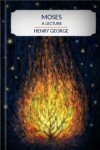
As a political economist, Henry George brings his unique vantage point to the person of Moses. In this lecture, he reveals the “real grandeur” of Moses that is evident to all—regardless of disputes in the field of biblical criticism. George paints the picture of Moses as a strong political leader while still staying true to Moses’ role as a religious leader.
Henry George (1839–1897) was an American economist and writer known for his proposal of a “single tax” system, which earned him much popularity in his day. He is the author of Progress and Poverty, Social Problems, Land Question, and Protection and Free Trade.
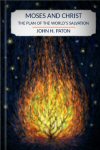
In this volume, John H. Paton delves into the typology of the Pentateuch and how the major figures and events in Genesis and Exodus prefigure Christ and his saving work. In examining these typological connections, he draws out the theme of God’s loving plan of redemption that is woven throughout Scripture.
John H. Paton (1843–1922) was a preacher and teacher who was dedicated to spreading the Gospel from an early age. He fought in the Civil War before being ordained a Baptist pastor, and he eventually served in various independent churches.
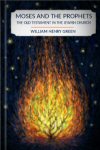
The nineteenth century saw a rise in critical scholarship that questioned the Mosaic authorship of the Pentateuch. In this work, William Henry Green defends the idea that Moses authored the Pentateuch as he gives a detailed response to a work from W. Robertson Smith. In addition, Green also defends the supernatural nature of the prophetic books through his analysis of works by Smith and Abraham Kuenen.
William Henry Green (1825–1900) was a Presbyterian minister and professor of Old Testament at Princeton Theological Seminary.
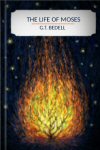
Moses is one of the greatest men in the Old Testament. In this volume, G.T. Bedell sticks faithfully to the biblical narrative, touching on every moment in the life of Moses in order to communicate important lessons to his readers about what God is trying to teach them today.
G.T. Bedell (1817–1892) was educated at Bristol College, Virgina Theological Seminary, and Norwich University. Bedell later became the bishop of Ohio and bishop of Ecusa. He is the author of The Valley of Bones: Ezekiel’s Vision.
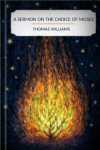
Thomas Williams begins his stirring sermon with Hebrews 11:25. From there, he elaborates on the choice that Moses made to endure hardship as a saint, rather than pleasures as a sinner. He draws the attention of his audience to exactly the types of worldly enjoyments Moses would have been giving up, as well as the trials that he accepted.
Thomas Williams (1779–1876) wrote a verse-by-verse commentary on the Songs of Songs and published many sermons, including A Sermon on the Salvation of Sinners, and A Sermon on the Perfection of God in the Imperfection of His People.
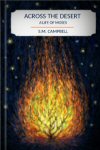
In this book, Samuel Miner Campbell provides an accessible overview on the life of Moses. This practical work is aimed at the average person, while remaining rooted in sound scholarship.
Samuel Miner Campbell (1823–1892) was a Presbyterian minister from Rochester, New York.
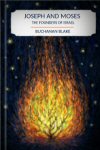
Prophecy is a central part of the Old Testament. In this volume, Buchanan Blake makes the case that prophecy began much earlier than with the first prophetic writers. He delves into the lives of Joseph and Moses to illustrate their role as prophets. Rather than attempting an exhaustive biography of both figures, he focuses in on those prophetic moments in their lives and draws out the rich spiritual meaning for his readers.
Buchanan Blake was a minister with an interest in Old Testament prophecy who authored the five volume set How to Read the Prophets.
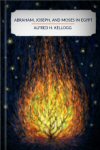
In this collection of lectures given at the Princeton Theological Seminary, Alfred H. Kellogg looks at both the historical data and the biblical data to propose a chronology of where Abraham, Joseph, and Moses fit into Egyptian history. Kellogg gives a thorough evaluation of the historical evidence and shows how it aligns with the biblical account.
Alfred H. Kellogg was a Presbyterian minister from Pennsylvania. He graduated from Union Theological Seminary.
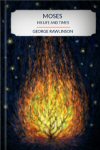
Taking for granted their Mosaic authorship, George Rawlinson presents a thorough biography of Moses based primarily on Exodus, Leviticus, Numbers, and Deuteronomy. Though the biblical account is in the forefront, the Rawlinson also incorporates other ancient extra-biblical sources to shed further light on the person of Moses.
George Rawlinson (1812–1902) was educated at Trinity College, Oxford, and was elected to a fellowship at Exeter College, Oxford. He served as Camden Professor of Ancient History from 1861 to 1889. Rawlinson went on to accept the offices of canon of Canterbury and rector of All Hallows, Lombard Street. His works include Ezra and Nehemiah: Their Lives and Times, Saint Paul in Damascus and Arabia, and The Seven Great Monarchies of the Ancient Eastern World (3 vols.).
Reviews
0 ratings